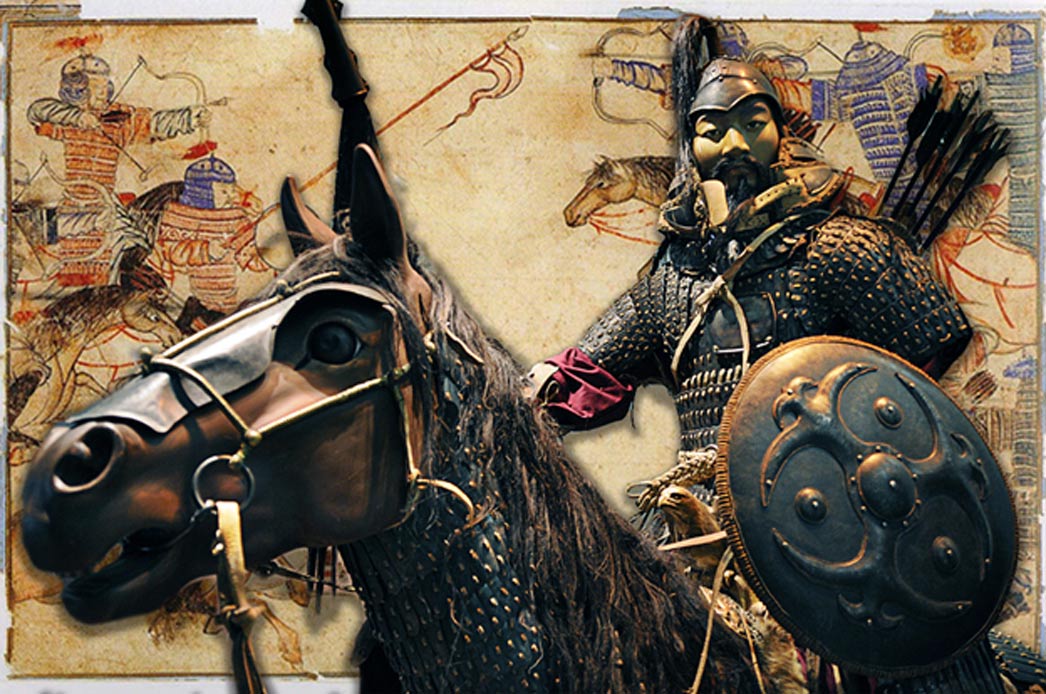
Subutai: Dog of War — Silent, Insatiable and Remorseless, Part II
For some great leaders and conquerors, names and actions have gone largely unnoticed through the annals of history. One such man of great influence but little renown, went by the name of Subutai.
Invasion into Central Europe: Battle of Liegnitz (1241)
Subutai planned the invasion of Central Europe, and did so with precision. This military expedition into Europe placed Subutai into the annals of great military leaders.
After beating down many of the Russian principalities, Subutai sent spies into Poland, Hungary, and even as far as to Austria. He was able to put together a dossier after gathering vital intelligence on the various kingdoms throughout Eastern Europe. Even though Subutai made the plans, his was under the command of Batu Khan.
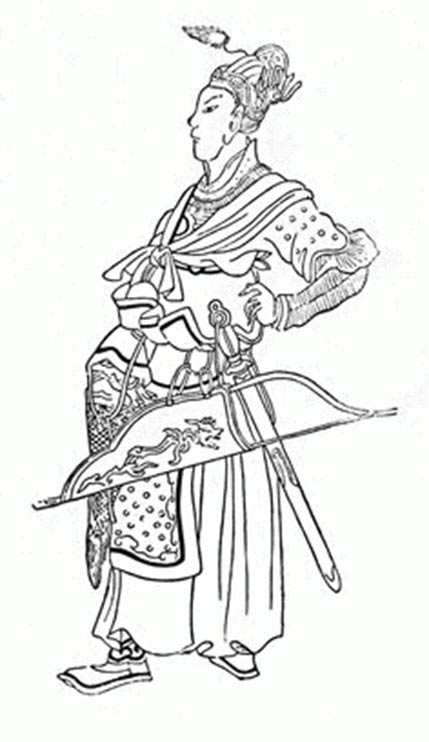
Medieval Chinese drawing of young Batu Khan (14th century). (Public Domain)
While Batu Khan was the leader of this expedition, Subutai, Kadan Kahn, Orda Kahn, Baidar, and a slew of others were the muscle behind the plans. Subutai's mission was to attack Central Europe by spearheading into Hungary. Kadan's forces would punch north into Poland.
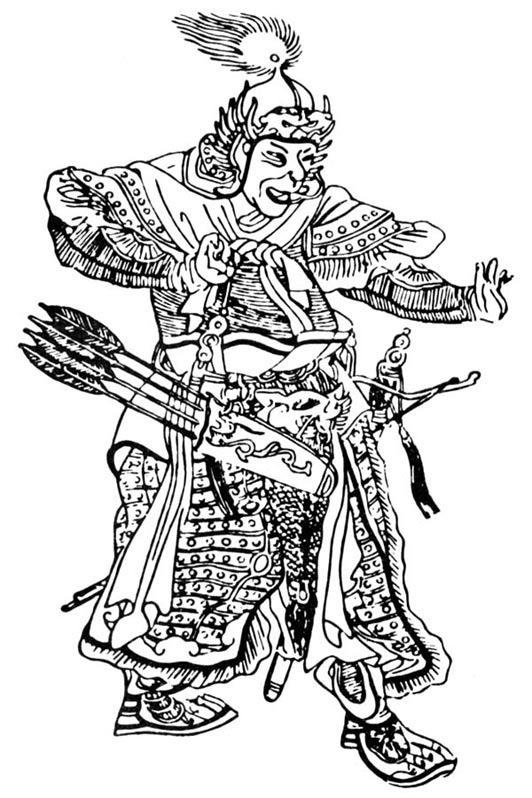
Subutai. Medieval Chinese drawing. (Public Domain)
Baidar led two Mongol tumans of soldiers westward into Silesia. The object was to destroy their European opponents before they could unite. Duke Henry II of Silesia on April 5, 1241 at Liegnitz was waiting for a force of 50,000 Bohemians under King Wenceslas. The Mongols were in the right place at the right time before the remaining forces could unite with Duke Henry. The Duke’s army was 25,000 strong consisting of Poles, Germans, Teutonic knights, Hospitallers, and Knights Templars. However, much of Henry’s army consisted of poorly trained, inexperienced levies. Can you image Bavarian gold miners fighting a battle for you?
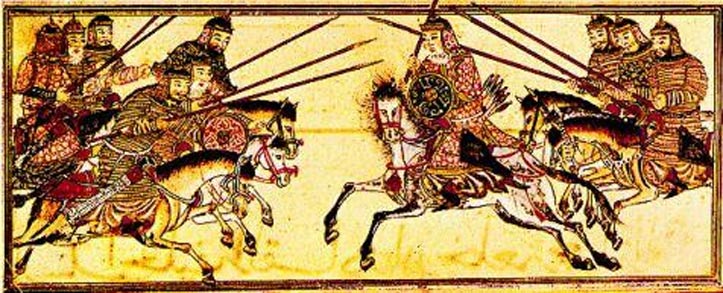
Mongol Heavy Cavalry (Public Domain)
Duke Henry’s army assembled themselves in a formation that was typical at the time for European armies. Heavy cavalry was the strike force looking to make the decisive blow to the enemy when the enemy showed weakness, while the infantry played only a supporting role protecting the rear. Henry’s formation is understandable and expected, but what Henry did not understand was the Mongol art of war. The Mongols used a tactic known as mangudai or feigned retreat. They would pretend to flee only to ambush those chasing after them.
The Mongols laid in wait for the Poles to make their move, as they did not want to give away their ruse. The Polish begin by charging the Mongols, hoping to engage them; however, the Mongol cavalry surrounded them and showered them with arrows.
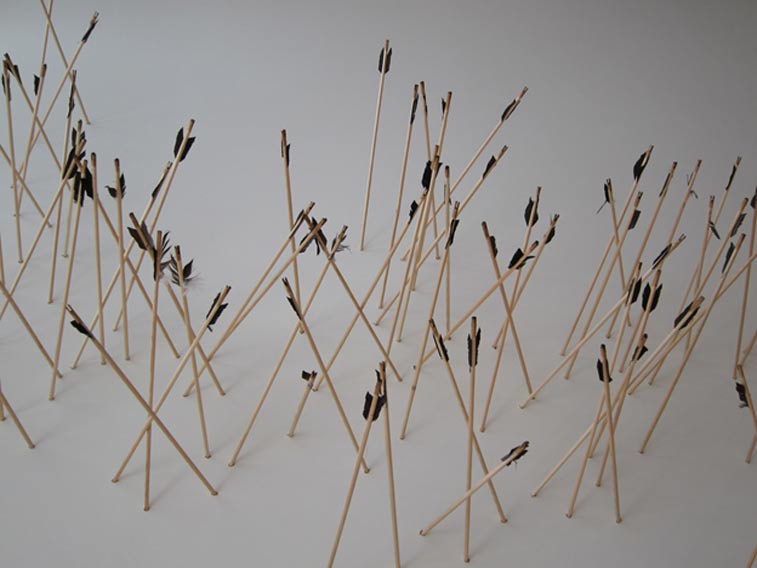
Arrows in the snow, from Genghis Khan: The Exhibition. (CC BY-SA 2.0)
The Polish quickly pulled back. They then made a second attempt at the Mongols with two cavalry units charging ahead. The Mongols quickly fled, acting as if they were scared. This fake retreat by the Mongols encouraged the knights to continue, moving deeper and becoming more frustrated while trying to engage the enemy—but the Mongols would not cooperate. Instead, the charging knights realized they were in a trap. It was too late.
The Mongols surrounded the Europeans on three sides and began to shower their enemy with arrows and smoke bombs, separating the cavalry force sent in by Duke Henry from his main army. Once the dividing of Henry’s troops had been accomplished, the Mongol heavy cavalry rode down and cut to pieces the European infantry, ultimately winning the battle. Duke Henry was also killed. His head became an ornament on the tip of the spear.
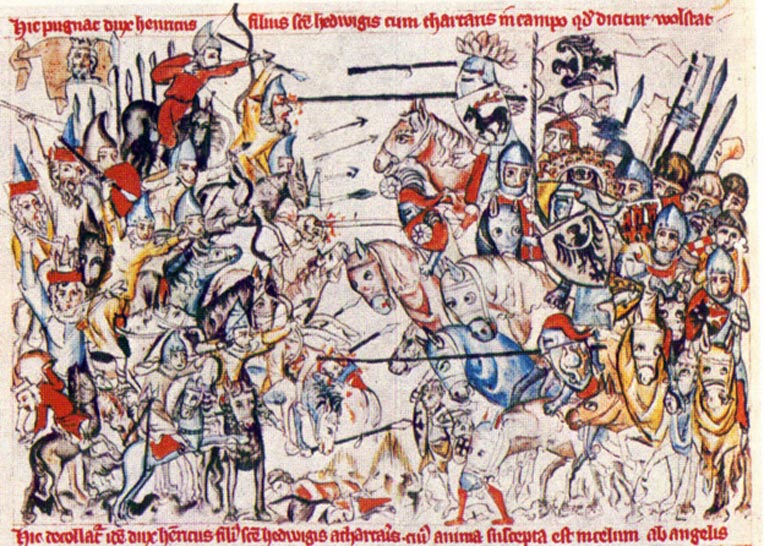
Battle of Legnica (Legnitz) 1241. (Public Domain)
Battle of Sajo River (or Mohi) (1241)
The Battle of Liegnitz took place a mere few days before the battle of Sajo River.
On the day of the battle, many European men died in the fighting including Duke Henry of Silesia. Once word got out that the Mongols had defeated Duke Henry, King Bela of Hungary was left to confront the Mongols with roughly around 80,000 men.
King Bela’s army was very much similar to Duke Henry’s, which consisted of heavy cavalry, infantry, and a number of mercenaries consisting of nomadic light cavalry. Bela’s army was huge, and one that could, if applied tactically, go toe to toe with just about any fighting force thrown at it. However, this fighting force was Mongols: smart thinkers who looked ahead and planned methodically.
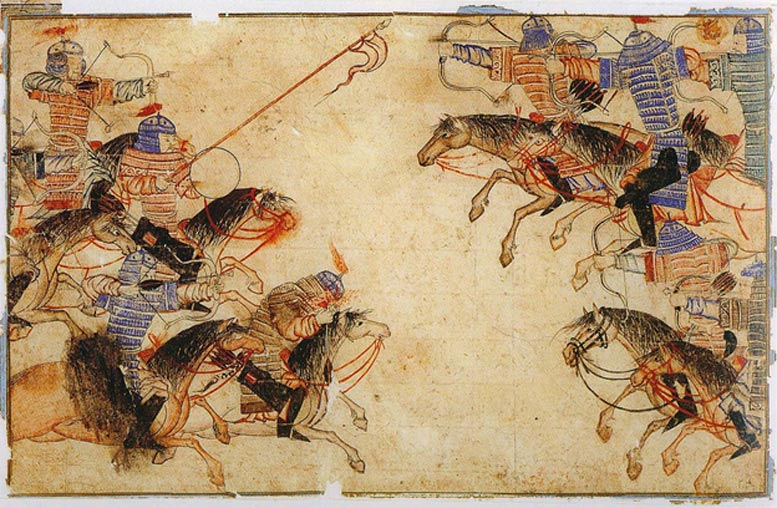
A Mongol melee in the 13th century. (Public Domain)
The Mongols choose a site called Mohi, which was on a plain. The reason for this location choice was to better maneuver their cavalry force while having a forest protecting their flanks. The Mongols quickly crossed over the Sajo River and rode a few miles ahead to make camp at that location. King Bela on the other hand arrived nearby and set up camp, sending a small unit ahead to guard the far side of the bridge.
The Mongols decided that it would be best to divide their forces, sending 30,000 up north under the command of Subutai. Subutai gave the order for a bridge to be built that crossed over the River Sajo to the Hungarian side.
Batu began his attack early at dawn on 11 April with 40,000 troops at his aid. They attacked the bridge, but this proved dangerous, unless the bridge could be flushed of the European forces stationed there.
Batu gave the order for the catapults to be brought up, which hurled bombs of various sorts and made raucous sounds, which were used against the European forces to cause a panic. Once the European forces fled from the bridge, Batu was able to cross and control the bridge and establish a foothold on Bela’s side.
Nevertheless, Bela gave the order for his cavalry to charge the Mongol cavalry, for the Mongol cavalry had the river to their back, thus walling themselves in somewhat, until Subutai arrived from the north to flank Bela’s army. In doing so, it freed up Batu forces to engage Bela’s forces. The Mongols in turn devastated Bela’s camp.
After several hours of fighting the Mongols allowed a gap in their lines big enough to allow European forces to escape by any means necessary. It was a bad idea to attempt escape, for the men had become a flood of panic and confusion. Nevertheless, the fate of the men fleeing was a deadly one. The Mongols cut down 60,000 men in a 30-mile (48 km) stretch back to Pest. King Bela escaped the butchery, most likely a changed man.
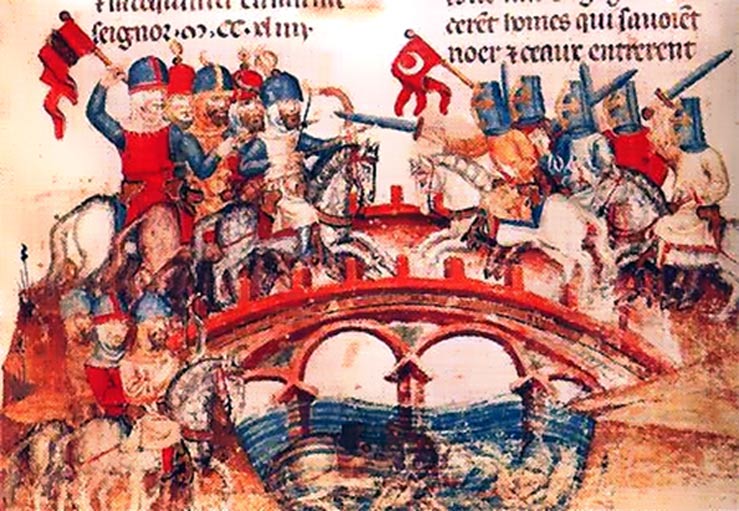
Battle of Mohi 1241 between Hungarians and Mongols. (Public Domain)
Once Hungary was clear of any foe left to challenge them, the Mongols knew that it was time to complete the mission and conquer the rest of Hungary. However, although it seemed the fate was sealed for the Hungarians, chance saved the Hungarians: a significant death. The Mongol Khan Ogotai died in December 1241, and Batu was forced to leave in order to elect a new Khan, as was their custom.
The Nine Principles of War
The Mongols demonstrated the Nine Principles of War at both Liegnitz and Sajo by massing their forces on a concentrated position at the right time and place.
The Mongol objective was clear and decisive as to whom they would hit, like clockwork, in order to gain the advantage.
The Mongol offensive was a strike force that could now exploit the enemy and retain enemies to do their will—all by the use of psychological maneuver.
Surprise in the Mongol offensive was crucial in order to disrupt the enemy to thrown him off balance. This allowed the Mongol economy of force to fully concentrate all secondary units on primary targets, to achieve a much greater position then his enemy. This allowed the Mongols to maneuver their enemy into a fixed position for the beating.
Mongol flexibility and cunningness was crucial to this endeavor. Unity of command under the Mongols was by one Batu Khan. However, Batu was flexible in his unity of command in order to gain the best out of his officers, such as with Subutai.
Because of the Mongol effectiveness in chaos and confusion, it allowed for a great sense of security on their behalf. The Mongol army could create an atmosphere of safety to ensure that their troops always had the advantage over the enemy. With security safely applied, the objective of simplicity was greatly understood in order to execute any order without asking twice.
The reason why both Duke Henry and King Bela lost the battles was due to a lack of combined arms or a lack of understanding how to utilize them in a time of war. However, this may be unfair to those who died. Nevertheless, from what we have read, we can see why they lost: a lack of good troops with experience, the feeling of over confidence and superiority, and most important, a lack of understanding of their enemy’s way of warfare.
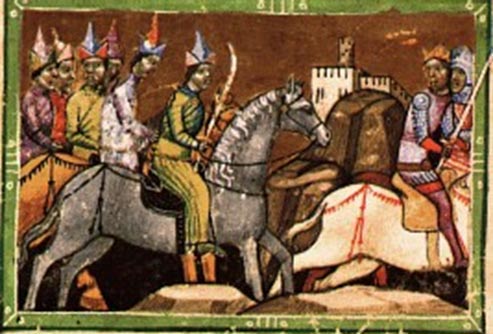
Béla IV flees from Mohi (Public Domain)
The End of the European Theater
The Mongol onslaught into Europe would halt when on 11 December 1241 when the great Mongol leader Ogedei Khan died.
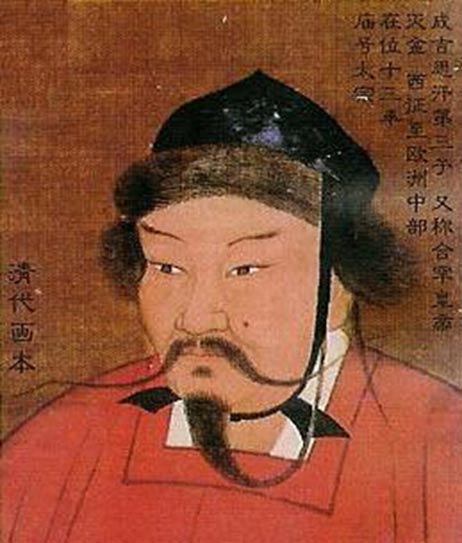
Portrait of Ögedei Khan (the 14th century). The Chinese annotation reads: Third son of Genghis Khan, also known as Emperor Qaγan. He eliminated the Jin, his west expedition read central European. He reigned for 13 years, temple name Taizong. (Public Domain)
With his death, it was mandatory that all Mongol military expeditions stop and the Mongol princes were required to return to the capital of Karakorum to elect a new Khan. It was during this event that Subutai had been drawing up plans for the invasion of the Holy Roman Empire, but the man in charge of the European theater, Batu Khan, had to rush back since he was a prince.
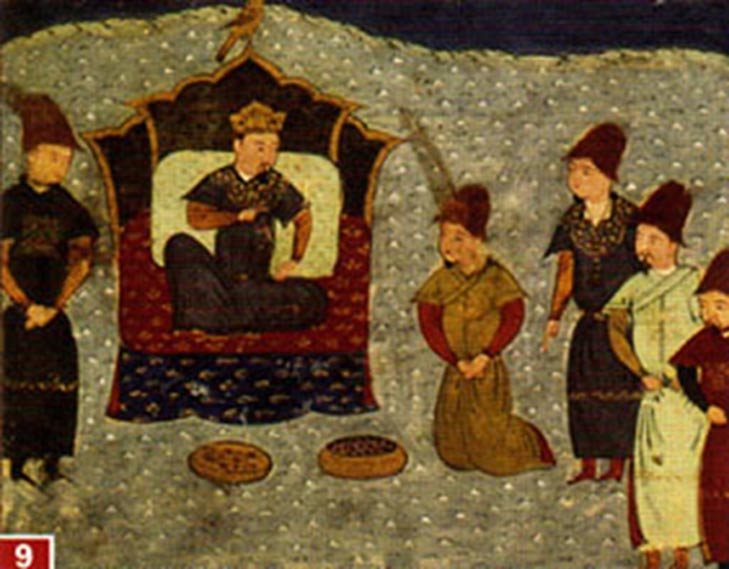
Batu Khan on the throne. Batu Khan was a Mongol ruler and founder of the Golden Horde. Batu was a son of Jochi and grandson of Genghis Khan. (Public Domain)
It took three years before a new khan was elected and the man elected was Guyuk, and Guyuk had no interest in Batu. With a feud now in the works, any further military operations into Europe had ceased for the time being. With Subutai's ambitions to advance further into Europe dashed, he received new military operations to conduct, particularly at the Song Dynasty during 1246-47.
The Legacy of Subutai
In 1247, a Franciscan monk by the name of Plano Carpini visited the Mongol court. In his letters, he mentioned that Subutai was still alive and in his early seventies. Carpini also went on to state that Subutai was held in high regards among the court, and referred to him as “Subutai the Unfailing.”
Carpini wrote, “He was a soldier without weakness.” Carpini is just one of the few sources available that speak on the man's personality. The Muslims for instance, saw him as “silent, insatiable, and remorseless.” The Russians said he was "extremely disciplined." The Chinese had a much more revealing description. They looked upon Subutai in high esteem, and he was a great warrior. When Subutai passed, the Chinese bestowed an honorary title on him, proclaiming Subutai King of Honan (Hunan Province). The reason for this title, was that Subutai captured the province from the Chin. He was also awarded the title of “faithful and steady.”
In 1248, Subutai returned to Karkorum after a successful campaign, and retired. After Subutai left court, he is said to have removed the badges of rank from his yurt and spent the remainder of his days tending to his herds and watching over his grandchildren, particularly his grandson, Achu, and he sharpened his warrior skills.
Some say he went home near the Tuul River, others say he died alone in a tent, while others say he moved further west near the Danube River to be near his son, Uriangkatai, who was in the service of Batu army, serving as an officer. If so, Subutai would spend the remainder of his days living with the territory of the Golden Horde.
It is said he had grown tired of the court, and rightfully so. Subutai grew nauseous of the political squabbling of the Mongol princes, particularly that of Batu and Kuyuk that went on long after Ogedai's death. By 1248, the once-great Mongol Empire established by Genghis Khan was still great, but fractures created after the death of Ogedei in 1241 continued to grow and further separate the empire from its foundation.
In the end, historical record does little justice and provides little information when it comes to generalship of Subutai. Furthermore, this piece cannot relate the grand scope of all of the battles and wars he part took in, but instead provide a rare glimpse into the man called Subutai.
If one wants to know how accomplished this man was as a general on his Eurasian tour, then consider the words of Sir Basil Liddell-Hart, as he states that Subutai from China to the Danube “had conquered thirty-two nations and won sixty-five pitched battles.” As military historian Richard Gabriel further comments, and rightfully speaks of Subutai’s achievements, they’re described as “a record of accomplishment literally unsurpassed by any of the great generals who had gone before him.”
Unfortunately, Subutai has long been overlooked, especially in military circles, but now his successes on the battlefield have become known for all to see and decipher.
After he retired, Subutai died two years later at the age of 72. Even though Subutai was dead, his sons and their descendants continued to serve one Khan after another for the next three decades.
Subutai is thus remembered in The Secret History of the Mongols:
"They are the Four Dogs of Temujin. They have foreheads of brass, their jaws are like scissors, their tongues like piercing awls, their heads are iron, their whipping tails swords . . . In the day of battle, they devour enemy flesh. Behold, they are now unleashed, and they slobber at the mouth with glee. These four dogs are Jebe, and Kublai, Jelme, and Subotai."
Featured image: Deriv; A Mongolian Cavalry recreation, from Genghis Khan: The Exhibition (CC BY-SA 2.0) , A Mongol melee in the 13th century. (Public Domain)
References
Bevin, Alexander. How great generals win. New York: W.W. Norton & Company, 2002.
Carey, Brian Todd, Allfree, Joshua B and Cairns John. Warfare in the Medieval World. Barnsley, UK: Pen and Sword, 2009.
Chambers, James. The Devil's Horsemen: The Mongol Invasion of Europe. Edison, NJ: Castle Books, 2003.
Craughwell, Thomas J. The Rise and Fall of the Second Largest Empire in the World: How 88 Years of Mongol Domination Reshaped the World from the Pacific to the Mediterranean Sea. . Gloucester, Maine: Fair Winds Press, 2010.
Crompton, Samuel Willard. 100 Military Leaders Who Shaped World History. San Mateo, CA: Bluewood Books, 1999.
Cummins, Joseph. History's Great Untold Stories: The Larger Than Life Characters and Dramatic Events That Changed the World. Washington DC: National Geographic, 2007.
Curtin, Jeremiah. The Mongols A History. Boston: DA CAPO PRESS, 2003.
Dupuy, Trevor N. Johnson, Curt. Bongard, David L. The Harper Encyclopedia of Military Biography. New York: Castle Books, 1995.
Edwards, Sean J. Swarming on the Battlefield" Past, Present, and Future. Santa Monica: Rand Coporation, 2000.
Gabriel, Richard A. Subotai the Valiant: Genghis Khan's Greatest General. Westport, Conn: Praeger, 2004.
Hart, B. H. Liddell. Great Captains Unveiled. New York and Washington D.C.: Da Capo Press, 1996.
Hartog, Leo De. Genghis Khan: Conqueror of the World. London, New York: Tauris Parke Paperbacks, 2004.
Kennedy, Hugh. Mongols, Huns & Vikings. London: Cassell, 2002.
Turnbull, Stephen. Genghis Khan & the Mongol Conquests 1190-1400. Oxford: Osprey Publishing, 2001.
Tzu, Sun, Griffith, B. Samuel (translator). The Art Of War. London: Oxford University Press, 1963.